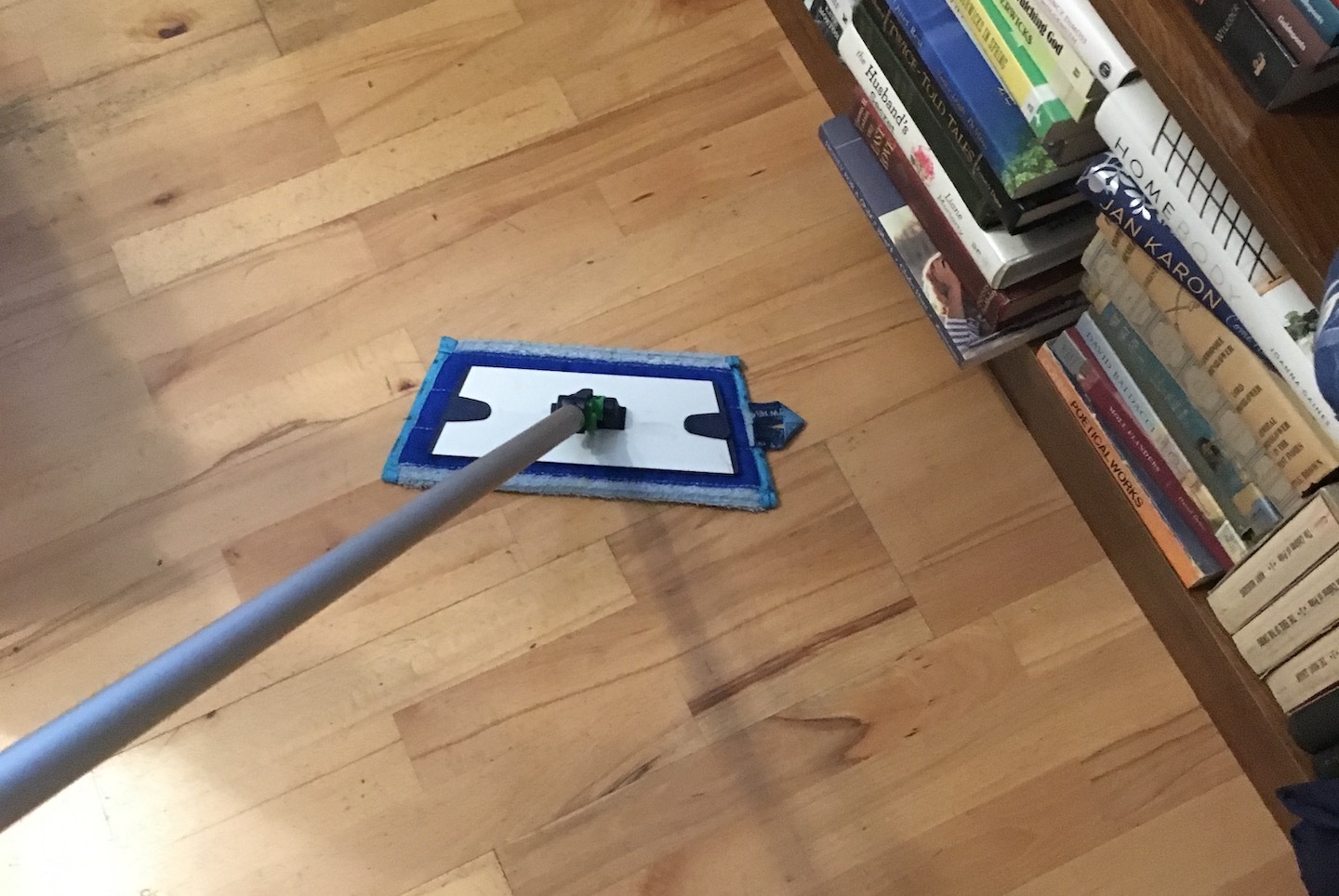A clean house! It’s a lovely sight, even if only for a short moment. If you clean a house (or any living quarters), there are some basic things you can do to work effectively and efficiently.
Work top to bottom. Start reaching up, then move down as you work through the room(s). The floor will be the last thing. This makes gravity your friend, as anything dust or dirt will work its way down as you clean.
Work clean to dirty. Wipe the cleaner items first. This allows you to keep the the worst dirt off of the rag until the end, right before it goes in the laundry. You will have to rinse out your rag or sponge or whatever fewer times as you go.
Restock as you go. Fill up the swab jar, the napkin holder, the extra toilet paper roll stack, etc., each time you clean the room. You may have to do this in between sometimes, but it will guarantee that you are stocked on a regular basis otherwise.
Clean the floor dry to wet. Vacuum first, to pick up the big pieces of dirt. Then dry mop to wipe up the dust. Finally, the wet mop will clean the sticky stuff and everything left. This will keep your mop cleaner and keep you from pushing gravel or leaves around the floor, or stopping to pick piles of dirt up, as you mop.
Build a routine. Remember, habits help.
- Use patterns. As you vacuum, cover sections one at a time to make sure you touch every part and keep on track without having to think about it.
- Find a routine and stick with it. If you clean room by room or task by task (dust whole house, then mop everywhere, etc.), find your groove. You will get used to the flow and then sail through the routine without struggling to remember where you are and what should be next.
- Turn off lights when room is finished. I love to see progress, so I motivate myself by turning all the lights on at the start. (That’s necessary to see, of course, but also essential for the reward.) As I finish a room, I turn the light off on my way out. It’s a little pat on the back as the cleaning wraps up.

